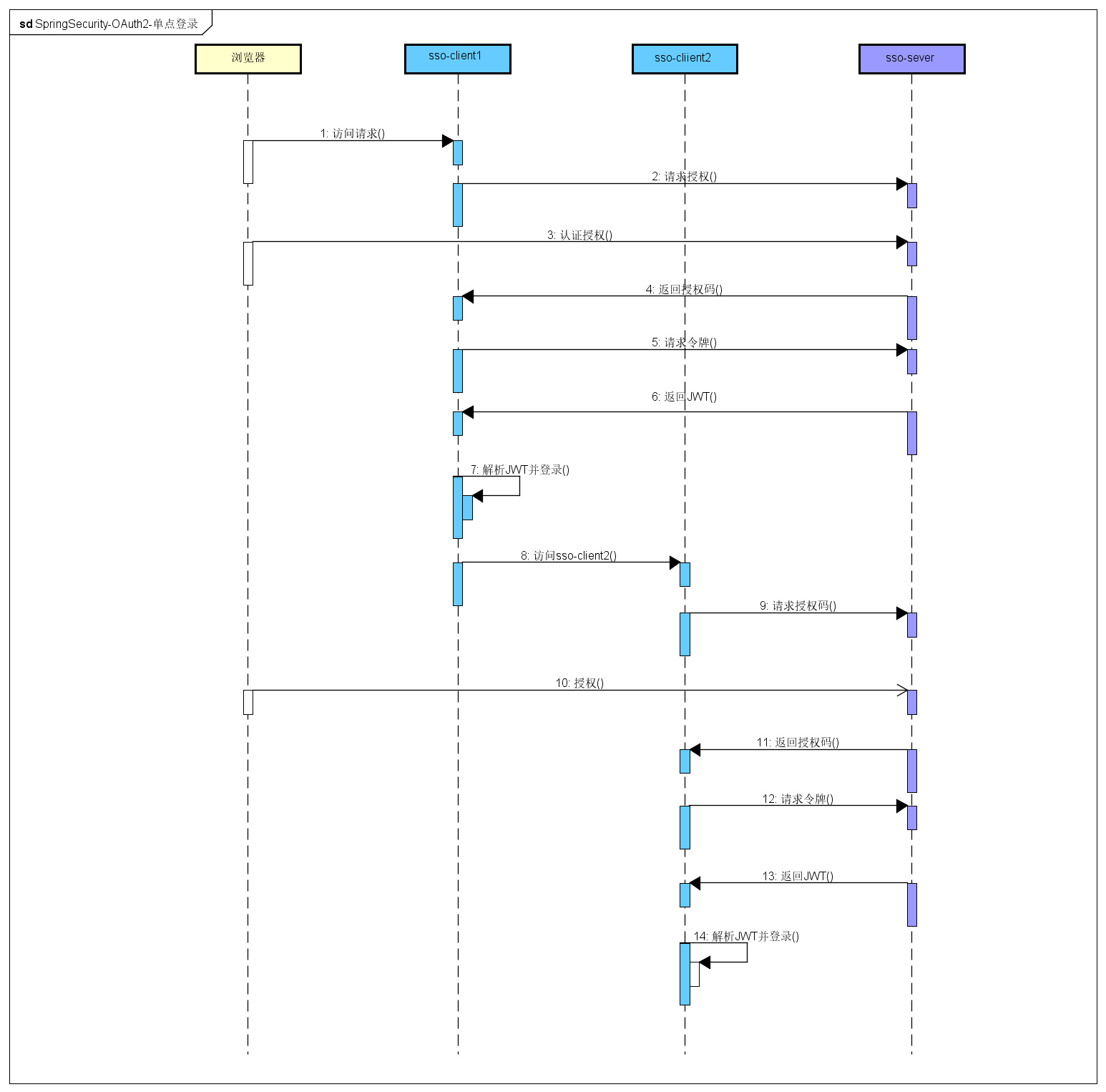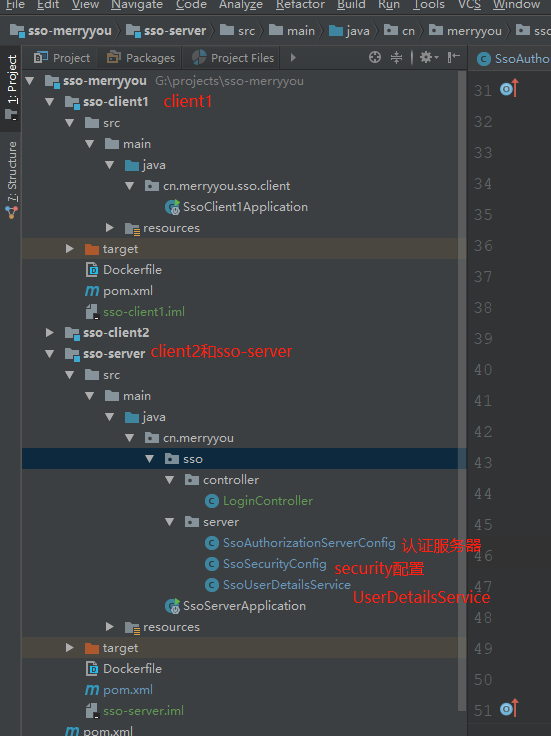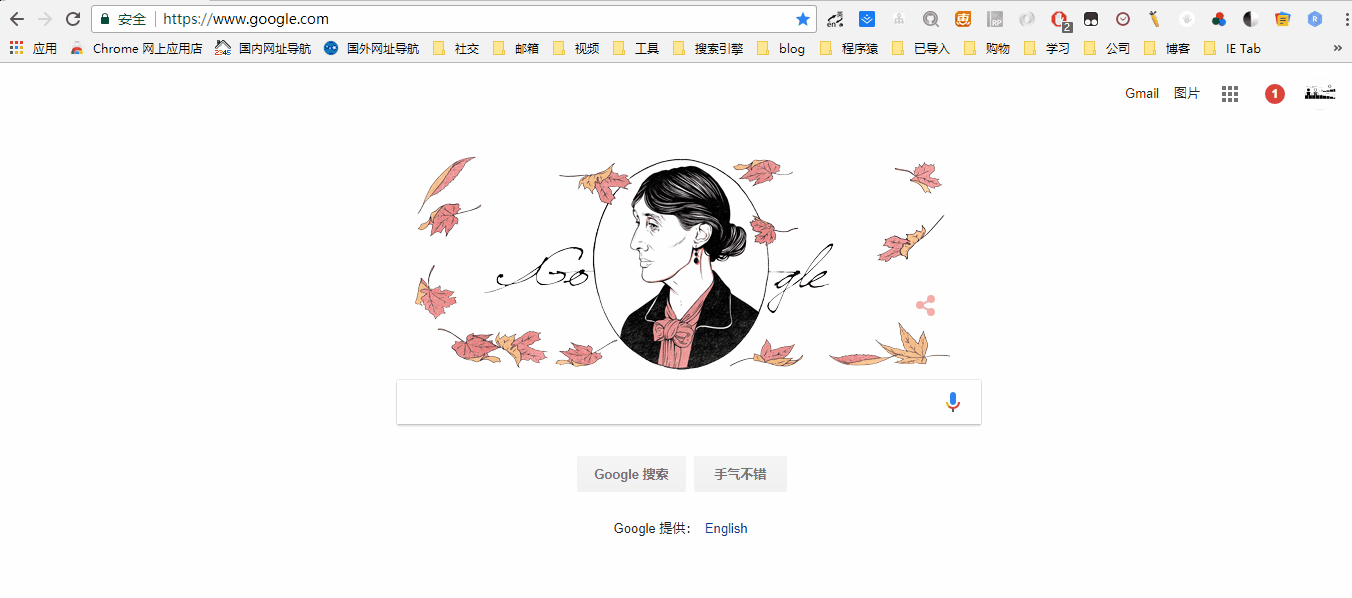前言
大家好,我是老马。
今天我们来一起介绍一些常见的 sso 开源项目。
项目
前后端合一:
前后端分离:
sso-merryyou
单点登录(英语:Single sign-on,缩写为 SSO),又译为单一签入,一种对于许多相互关连,但是又是各自独立的软件系统,提供访问控制的属性。
当拥有这项属性时,当用户登录时,就可以获取所有系统的访问权限,不用对每个单一系统都逐一登录。
这项功能通常是以轻型目录访问协议(LDAP)来实现,在服务器上会将用户信息存储到LDAP数据库中。
相同的,单一注销(single sign-off)就是指,只需要单一的注销动作,就可以结束对于多个系统的访问权限。
Security OAuth2 单点登录流程示意图

- 访问client1
client1将请求导向sso-server- 同意授权
- 携带授权码
code返回client1 client1拿着授权码请求令牌- 返回
JWT令牌 client1解析令牌并登录client1访问client2client2将请求导向sso-server- 同意授权
- 携带授权码
code返回client2 client2拿着授权码请求令牌- 返回
JWT令牌 client2解析令牌并登录
用户的登录状态是由sso-server认证中心来保存的,登录界面和账号密码的验证也是sso-server认证中心来做的(client1和clien2返回token是不同的,但解析出来的用户信息是同一个用户)。
Security OAuth2 实现单点登录
项目结构

sso-server
认证服务器
@Configuration
@EnableAuthorizationServer
public class SsoAuthorizationServerConfig extends AuthorizationServerConfigurerAdapter {
/**
* 客户端一些配置
* @param clients
* @throws Exception
*/
@Override
public void configure(ClientDetailsServiceConfigurer clients) throws Exception {
clients.inMemory()
.withClient("merryyou1")
.secret("merryyousecrect1")
.authorizedGrantTypes("authorization_code", "refresh_token")
.scopes("all")
.and()
.withClient("merryyou2")
.secret("merryyousecrect2")
.authorizedGrantTypes("authorization_code", "refresh_token")
.scopes("all");
}
/**
* 配置jwttokenStore
* @param endpoints
* @throws Exception
*/
@Override
public void configure(AuthorizationServerEndpointsConfigurer endpoints) throws Exception {
endpoints.tokenStore(jwtTokenStore()).accessTokenConverter(jwtAccessTokenConverter());
}
/**
* springSecurity 授权表达式,访问merryyou tokenkey时需要经过认证
* @param security
* @throws Exception
*/
@Override
public void configure(AuthorizationServerSecurityConfigurer security) throws Exception {
security.tokenKeyAccess("isAuthenticated()");
}
/**
* JWTtokenStore
* @return
*/
@Bean
public TokenStore jwtTokenStore() {
return new JwtTokenStore(jwtAccessTokenConverter());
}
/**
* 生成JTW token
* @return
*/
@Bean
public JwtAccessTokenConverter jwtAccessTokenConverter(){
JwtAccessTokenConverter converter = new JwtAccessTokenConverter();
converter.setSigningKey("merryyou");
return converter;
}
}
security配置
@Configuration
public class SsoSecurityConfig extends WebSecurityConfigurerAdapter {
@Autowired
private UserDetailsService userDetailsService;
@Bean
public PasswordEncoder passwordEncoder() {
return new BCryptPasswordEncoder();
}
@Override
protected void configure(HttpSecurity http) throws Exception {
http.formLogin().loginPage("/authentication/require")
.loginProcessingUrl("/authentication/form")
.and().authorizeRequests()
.antMatchers("/authentication/require",
"/authentication/form",
"/**/*.js",
"/**/*.css",
"/**/*.jpg",
"/**/*.png",
"/**/*.woff2"
)
.permitAll()
.anyRequest().authenticated()
.and()
.csrf().disable();
// http.formLogin().and().authorizeRequests().anyRequest().authenticated();
}
@Override
protected void configure(AuthenticationManagerBuilder auth) throws Exception {
auth.userDetailsService(userDetailsService).passwordEncoder(passwordEncoder());
}
}
SsoUserDetailsService
@Component
public class SsoUserDetailsService implements UserDetailsService {
@Autowired
private PasswordEncoder passwordEncoder;
@Override
public UserDetails loadUserByUsername(String username) throws UsernameNotFoundException {
return new User(username, passwordEncoder.encode("123456"), AuthorityUtils.commaSeparatedStringToAuthorityList("ROLE_USER"));
}
}
application.yml
server:
port: 8082
context-path: /uaa
spring:
freemarker:
allow-request-override: false
allow-session-override: false
cache: true
charset: UTF-8
check-template-location: true
content-type: text/html
enabled: true
expose-request-attributes: false
expose-session-attributes: false
expose-spring-macro-helpers: true
prefer-file-system-access: true
suffix: .ftl
template-loader-path: classpath:/templates/
sso-client1
SsoClient1Application
@SpringBootApplication
@RestController
@EnableOAuth2Sso
public class SsoClient1Application {
@GetMapping("/user")
public Authentication user(Authentication user) {
return user;
}
public static void main(String[] args) {
SpringApplication.run(SsoClient1Application.class, args);
}
}
application.yml
auth-server: http://localhost:8082/uaa # sso-server地址
server:
context-path: /client1
port: 8083
security:
oauth2:
client:
client-id: merryyou1
client-secret: merryyousecrect1
user-authorization-uri: ${auth-server}/oauth/authorize #请求认证的地址
access-token-uri: ${auth-server}/oauth/token #请求令牌的地址
resource:
jwt:
key-uri: ${auth-server}/oauth/token_key #解析jwt令牌所需要密钥的地址
sso-client2
同sso-client1一致
效果如下:

启动方式
-
启动sso-server
-
启动sso-client1
-
启动sso-client2
-
http://localhost:8083/client1/ 用户名随意,密码123456
-
http://localhost:8083/client1/user 查看当前的用户信息
参考资料
https://github.com/longfeizheng/sso-merryyou/blob/master/README.md
